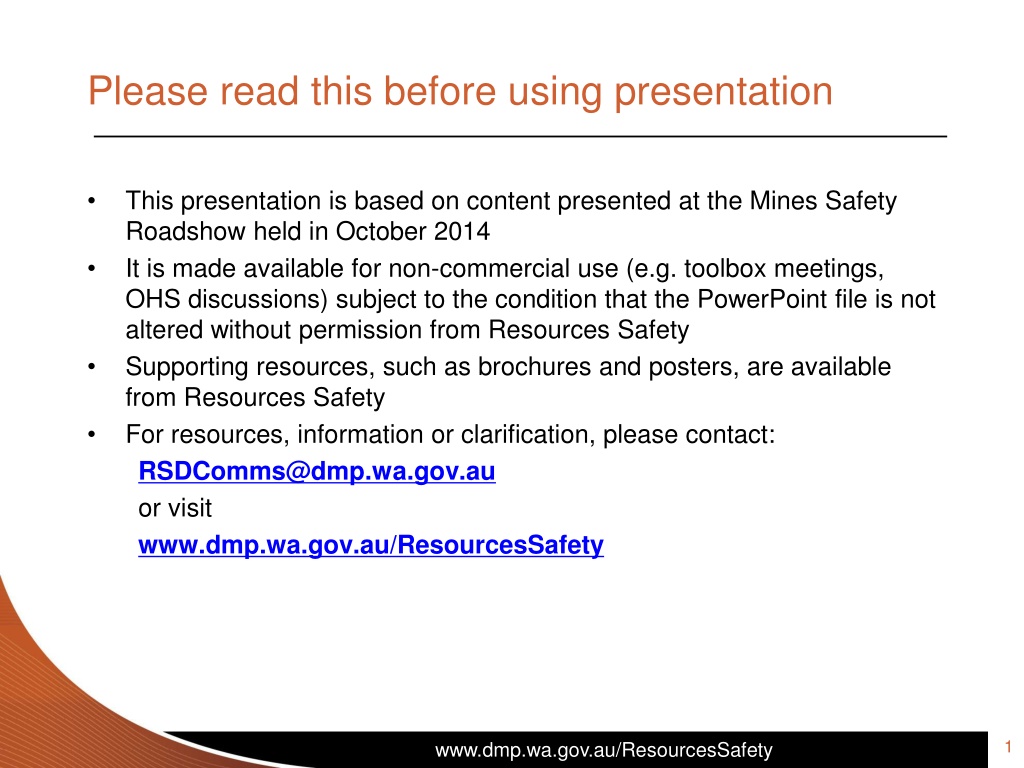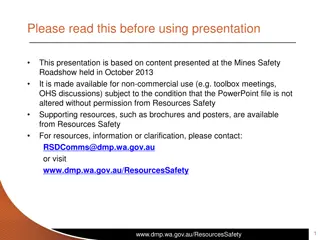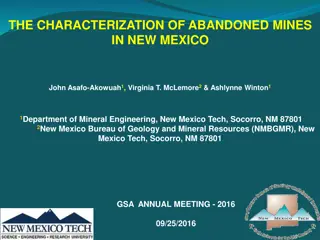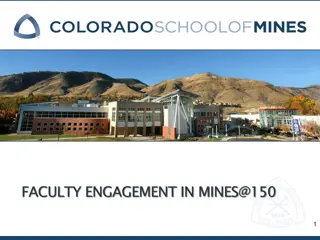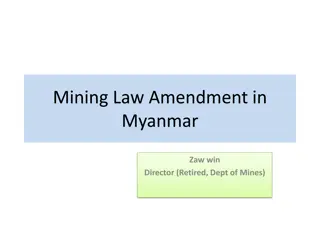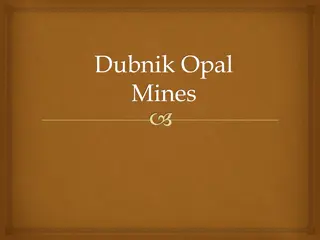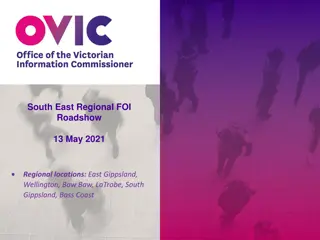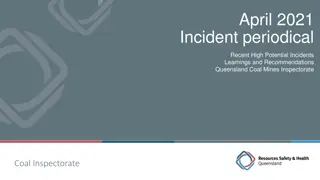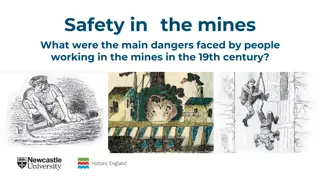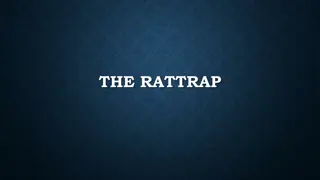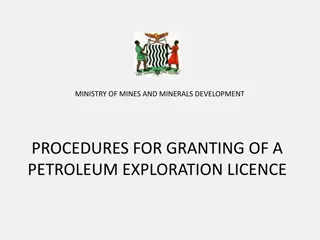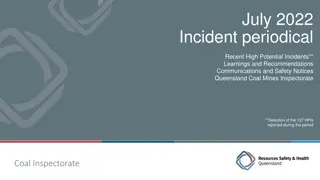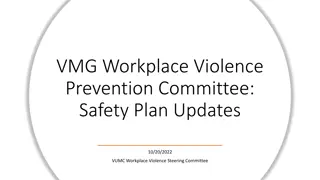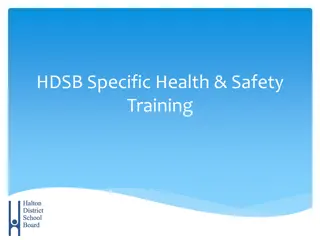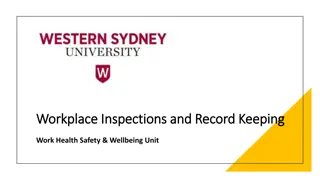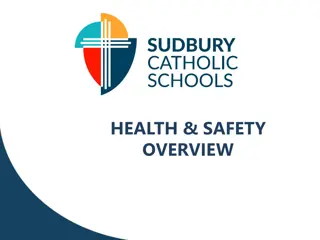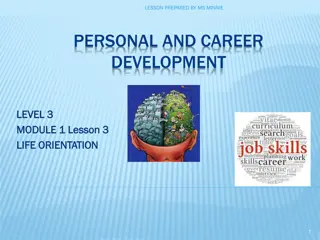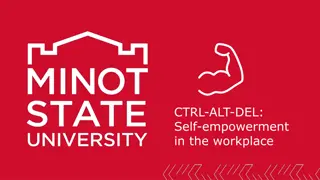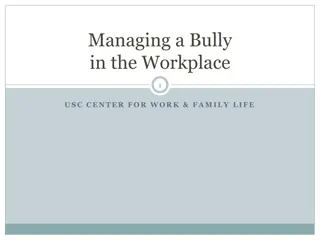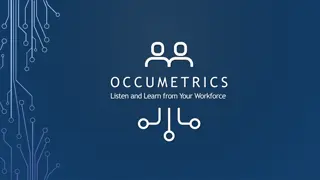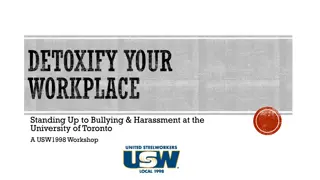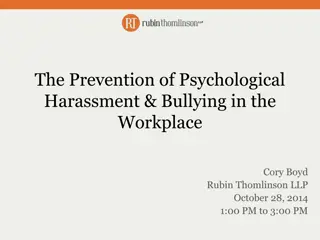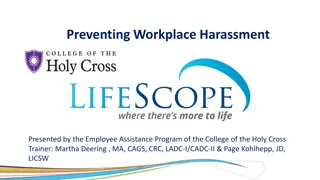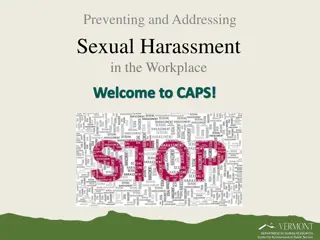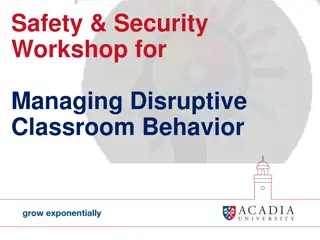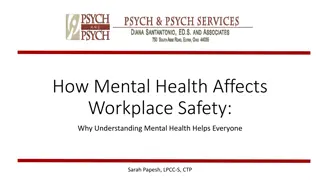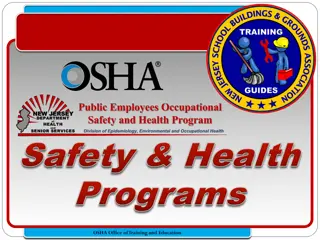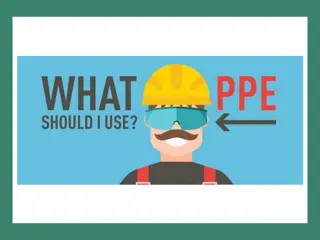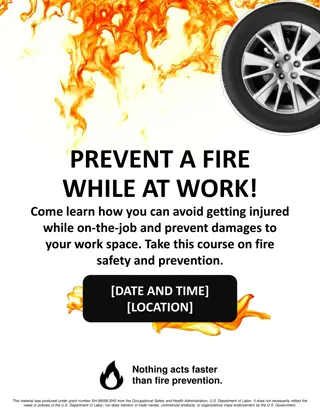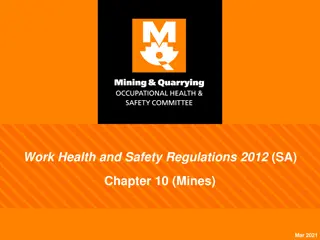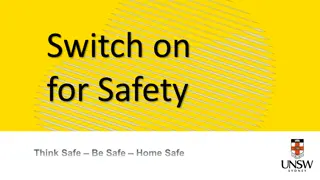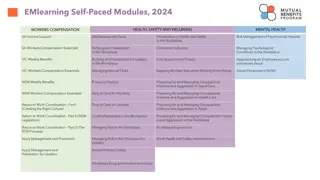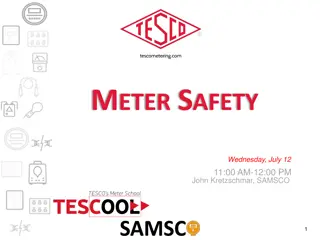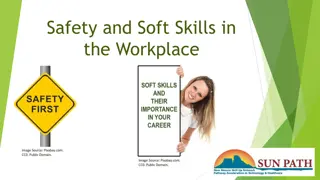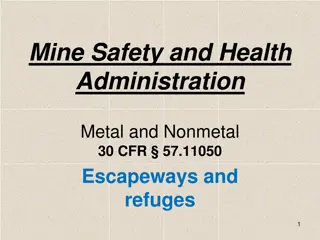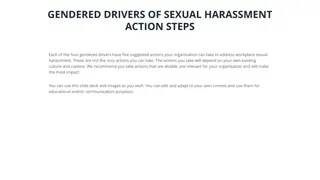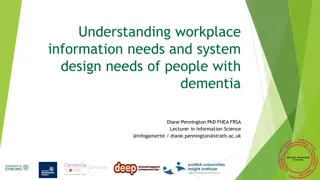Workplace Safety Strategies from Mines Safety Roadshow
This presentation, derived from the Mines Safety Roadshow in 2014, emphasizes the importance of risk management, hazard identification, and safety controls in mining operations. Key takeaways include understanding major hazards, thorough JHA/JSA comprehension, and supervisors' obligations under safety regulations. It promotes a common language for discussing hazards and controls to prevent unwanted events and harm in the workplace.
Download Presentation

Please find below an Image/Link to download the presentation.
The content on the website is provided AS IS for your information and personal use only. It may not be sold, licensed, or shared on other websites without obtaining consent from the author. Download presentation by click this link. If you encounter any issues during the download, it is possible that the publisher has removed the file from their server.
E N D
Presentation Transcript
Please read this before using presentation This presentation is based on content presented at the Mines Safety Roadshow held in October 2014 It is made available for non-commercial use (e.g. toolbox meetings, OHS discussions) subject to the condition that the PowerPoint file is not altered without permission from Resources Safety Supporting resources, such as brochures and posters, are available from Resources Safety For resources, information or clarification, please contact: RSDComms@dmp.wa.gov.au or visit www.dmp.wa.gov.au/ResourcesSafety 1 www.dmp.wa.gov.au/ResourcesSafety
Appropriate risk management strategies Assessing the risk within the task (includes suggested workshop activity) 2 www.dmp.wa.gov.au/ResourcesSafety
Resources Safetys focus on mines safety Maintenance and service activities Hazardous manual tasks Fit for purpose Principal hazard management plans Safety in design Assessment of competence Traffic management Job risk assessment tools (e.g. JHAs, JSAs) Fitness for work Management and supervision Safety and health representatives 3 www.dmp.wa.gov.au/ResourcesSafety
What we would like you take away Need to identify major hazards within a task Everyone involved in task must understand what is covered in the JHA/JSA before starting work Supervisors understanding their obligations under the Mines Safety and Inspection Act and regulations Consider any changes after the job starts and revise the JHA/JSA if necessary 4 www.dmp.wa.gov.au/ResourcesSafety
Lets establish a common language Hazard: Anything with the potential to cause harm 5 www.dmp.wa.gov.au/ResourcesSafety
An event is an occurrence or change of a particular set of circumstances Unwanted event: Situation or condition where there is a loss of control of the hazard Unwanted event Hazards Harm / Losses 6 www.dmp.wa.gov.au/ResourcesSafety
A control can prevent or mitigate an unwanted event A control: A measure that decreases the likelihood or consequence of an unwanted event Unwanted event Harm / Losses Hazards Controls 7 www.dmp.wa.gov.au/ResourcesSafety
Risk is NOT a hazard Risk: The chance of something happening that will have a negative impact on your work Likelihood of occurrence Consequence of outcome X Unwanted event Hazards Harm / Losses Controls 8 www.dmp.wa.gov.au/ResourcesSafety
Whats involved in risk management? Time of day? Weather? Wind? Adjacent work? Traffic management? Culture? Training? Experience? Familiar with task? Quality of supervision? Sufficient number? Safe work Understood? Practical? Appropriate? Adequacy of supervision? Condition? Availability? Sufficient quantity? 9 www.dmp.wa.gov.au/ResourcesSafety
What types of risk assessment exist and how can they affect me? 10 www.dmp.wa.gov.au/ResourcesSafety
Levels of risk assessment Unacceptable risk Quantitative risk assessments site or project risk register, PHMPs Increasing individual risks Increasing effort Tolerable risk Semi-quantitative risk assessments operational (SOP, SWI) region LOW to medium risk only Team or task-based risk assessments JHA, JSA Individual risk assessments Take 5, Take 2, STARRT Card Negligible risk 11 www.dmp.wa.gov.au/ResourcesSafety
Where does a JHA/JSA sit in the risk assessment hierarchy? It is a task-based risk assessment applicable for . When exposure to hazards or potential risks are predicted to be low to medium Non-routine jobs and task planning where there is no SOP or SWI Routine jobs where there has been a change in the complexity, detail or make-up of the job Developing, reviewing or modifying existing SOPs or SWIs 12 www.dmp.wa.gov.au/ResourcesSafety
Job must be understood before work starts Identify the MAJOR hazards associated with job those aspects involving energy that can kill or seriously injure. Everyone involved in job must understand the hazards, controls and major steps within the job as described in the JSA before work starts. JSA must be re-evaluated whenever there is a change. Supervisors have obligations under the MSI Act to ensure that risk assessments they sign are effective and protect their crew and other workers 13 www.dmp.wa.gov.au/ResourcesSafety
Workshop exercise to be developed in-house Aim: Develop a better understanding of risk management on the job, and the importance of involving the work team in recognising how changes can affect work conditions 14 www.dmp.wa.gov.au/ResourcesSafety
Scenario: Relevant task Describe the work to be done The task Who is doing it Where it will be done. You have been provided with a partially completed JHA/JSA and information about the task. Working in groups, fill in the gaps for hazards, unwanted events and controls. Focus on the significant hazards things that can kill or seriously hurt people. 15 www.dmp.wa.gov.au/ResourcesSafety
Changes how will you respond? You have been given information about changes in the work scenario and other conditions and now need to consider the impact of these changes in your JHA/JSA. For each job step, list: additional hazards unwanted events any change in controls. 16 www.dmp.wa.gov.au/ResourcesSafety
List the changes introduced and seek feedback from the groups. Additional hazards? Unwanted events? Any change in controls against each job step? 17 www.dmp.wa.gov.au/ResourcesSafety
Considerations when anything changes Safe work 18 www.dmp.wa.gov.au/ResourcesSafety
Remember .. The job must be understood before work starts 1. Identify the MAJOR hazards associated with job those aspects involving energy that can kill or seriously injure. Take 5s, Take 2s, STARRT cards etc. are for identifying low-level hazards that result in minor risks to you. 2. Everyone involved in job must understand the hazards, controls and major steps within the job as described in the JSA before work starts. 3. JSA must be re-evaluated whenever there is a change. 4. Supervisors have obligations under the MSI Act to ensure that any risk assessments they sign are effective and protect their crew and other workers 19 www.dmp.wa.gov.au/ResourcesSafety
